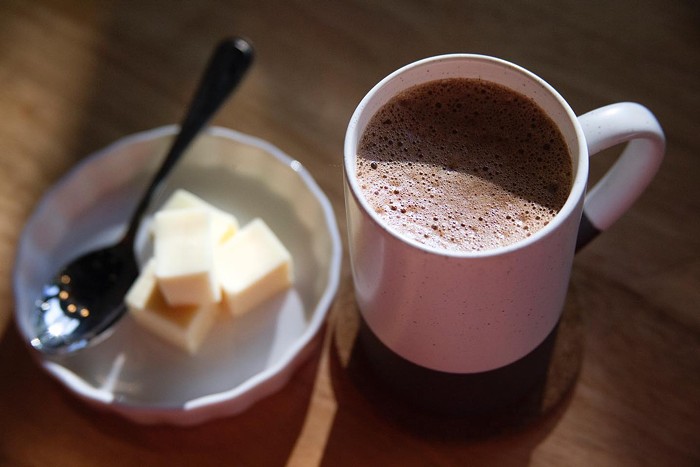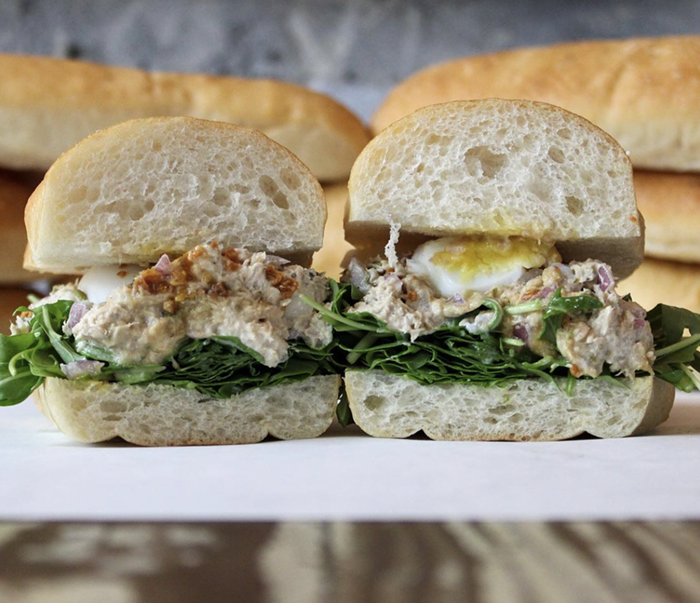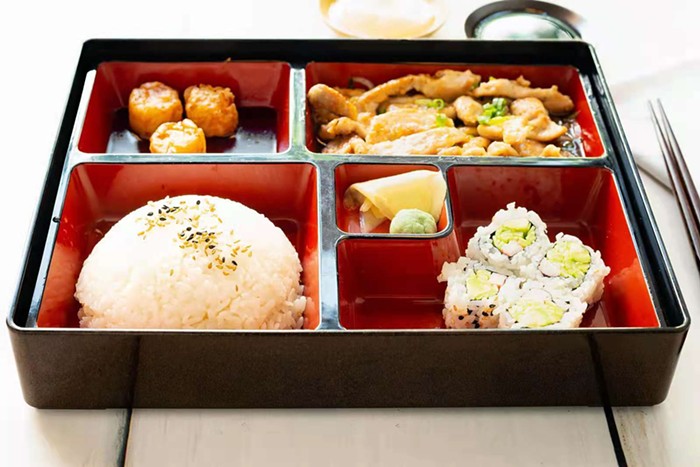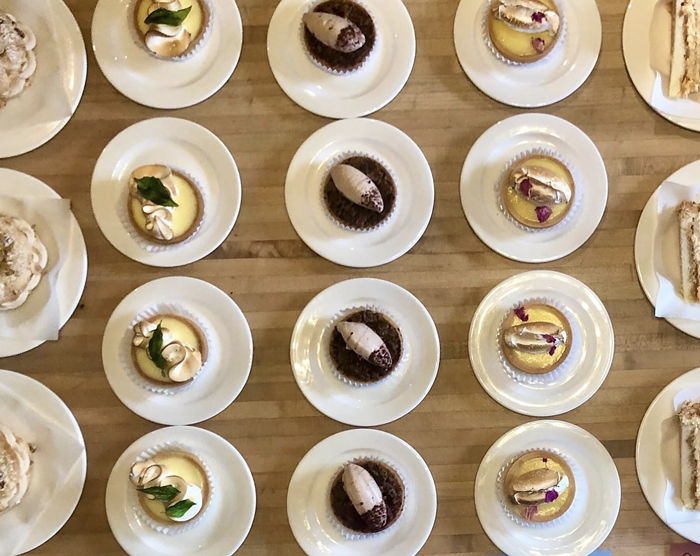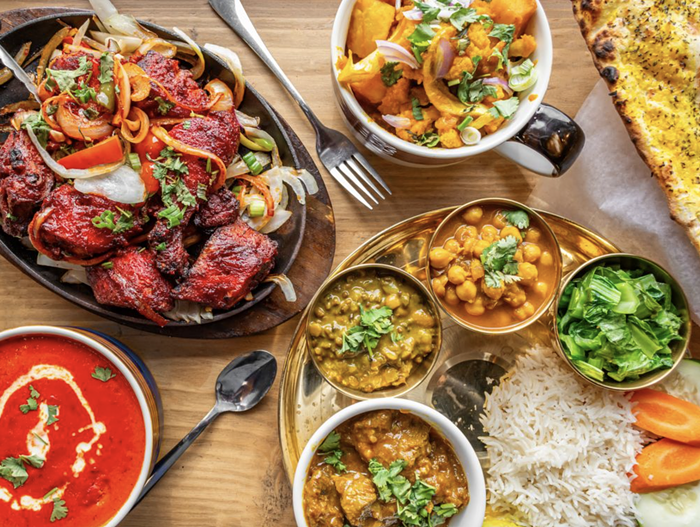As I stepped into Travelers last week, I saw a small child approach Ganesh's altar, reach into a bowl full of idli (savory balls of rice flour stuffed with til seeds), and pop one into her mouth."You can't eat Ganesh's idli!" whisper-screamed the child's mother. "You'll make him angry! Spit it out and eat your dal." The child obligingly spit the religious sacrifice into her mother's hand. They were eating at Travelers' cafe, the practically secret restaurant inside the Indian knickknack store and tea shop that has quietly existed on Pine Street for 12 years.
The cafe is not a new addition—it's been around for four years—but it's easy to miss because it's only open for lunch along with a few hours' worth of dinner on the weekends. Owner Allen Kornmesser, a white guy with a PhD in Indian politics, focuses on cooking the home-style Indian dishes he ate while living in India—simple dal (lentils), stuffed flatbreads, chickpea curries. With all the hippie knickknacks, religious bells, and altars, eating at Travelers feels like sharing a meal with strangers in your mystically religious uncle's basement. This is not a bad thing.
There's banter and bad jokes ("What's the difference between Buddha and a vacuum?" Answer: "Attachments"). There are children testing bells, angering gods, and rattling incense. Indian music plays softly in the background. The cafe's seven tables provide a comfortable place where people feel welcome to sit, eat, drink, and linger. (One caveat: The smell can be overwhelming—spices and sandalwood soap and massage oils and various incenses caused my dinner companion to breathe shallowly through his mouth throughout an entire meal.)
The food is cheap, simple, and delicious. You order at the counter. It's vegetarian (vegan upon request). "Temples and vegetarianism go together," says Kornmesser. "We had an altar before we had a kitchen." While the dishes don't stick to any one region, they are prepared to "honor" ayurveda, an herbal system that provides the foundation of traditional Indian medicine. "I wouldn't call us an ayurvedic restaurant," says Kornmesser. "But I pay attention to the main principles of health. In India, this means providing a balance of the six main tastes—sweet, sour, salty, pungent, astringent, and bitter. All of those things need to appear on a well-balanced plate. I'm especially cognizant of that in the thali."
This ayurvedic stuff may sound like bullshit if, like me, you're not interested in stimulating your taste buds as a path to health or higher consciousness. Or if, like me, you have no desire to find out what "pungent" or "astringent" taste like. That said, I urge you: Do not pass up the thali. It's six dramatic tastes represented on one plate, and it's absurdly satisfying, even if you don't enjoy every flavor. It's an exercise that leaves your tongue panting.
The full thali ($14) changes monthly and easily feeds two people with the addition of naan (plain or garlic, $2). The many components are served in small steel bowls, and there's enough variety to please both adventurous eaters and their unwilling, mouth-breathing dinner companions. For September, the thali includes a dal with mung beans, cucumber, and green tomato, seasoned with fried onion and toasted cumin seeds. It hit the tongue sour, but with refreshing notes of cucumber. The zucchini kofka curry—a fried summer-squash dumpling in a creamy tomato and cashew-nut gravy—is firm and rich. Maybe it's pungent—who the fuck knows? The grainy nut gravy overshadows the passive flavors of squash, but this is not bad if you love nuts (or gravy).
My dinner companion decided that the small roasted yellow peppers stuffed with a potato, onion, and ginger mixture were easily the tastiest item on the plate, perhaps because their flavors—salty, creamy, a little spicy—were the most familiar. You hardly have to chew them, just suck them whole from the stem and let them dissolve on your tongue. They came recommended by not one but two children. These children also recommended the samosas (which are not part of the thali, but worth sampling, $6 for two) stuffed with potatoes, peas, and spices. The samosas retained a crisp crust without succumbing to sogginess or oiliness; their insides were warm and slightly spicy. However, the chickpea chole served with the samosas was the one standout disappointment to the meal—the chickpeas were undercooked, leaving them dry and hard. Also, they needed salt.
The bitter achar pachranga pickle (popular in Delhi) tastes how I imagine refrigerator coolant to taste. I suppose you could call that astringent.
Other dishes in the thali—like the bhindi raita (fried okra served cold with red onion, cilantro, and toasted seeds in a creamy yogurt dressing) and the saffron kheer (rice pudding with cardamom, almonds, and saffron)—were delicious, but the crowning glory of the meal was the diced radish and orange salad. The firm spiciness of the radish pleasantly warred with the Jell-O-y sweetness of orange, which was offset with tomatoes, green chili, mint leaves, salt, and lime juice. It's a salad that could pass as a snappy dessert. I licked the tiny bowl clean.
After such a meal, there's nothing left to do but order chai. Travelers has long been known for its homemade chai ($2 for a 12 ounce). "This is the chai you'd get in a maharaja's house—it's some serious chai," says Leon, the manager, before telling you another Buddha joke. Behind him, a child shakes one of Ganesh's many hands. Leon recommends whole milk with the chai, not rice or soy. It's better that way. ![]()


